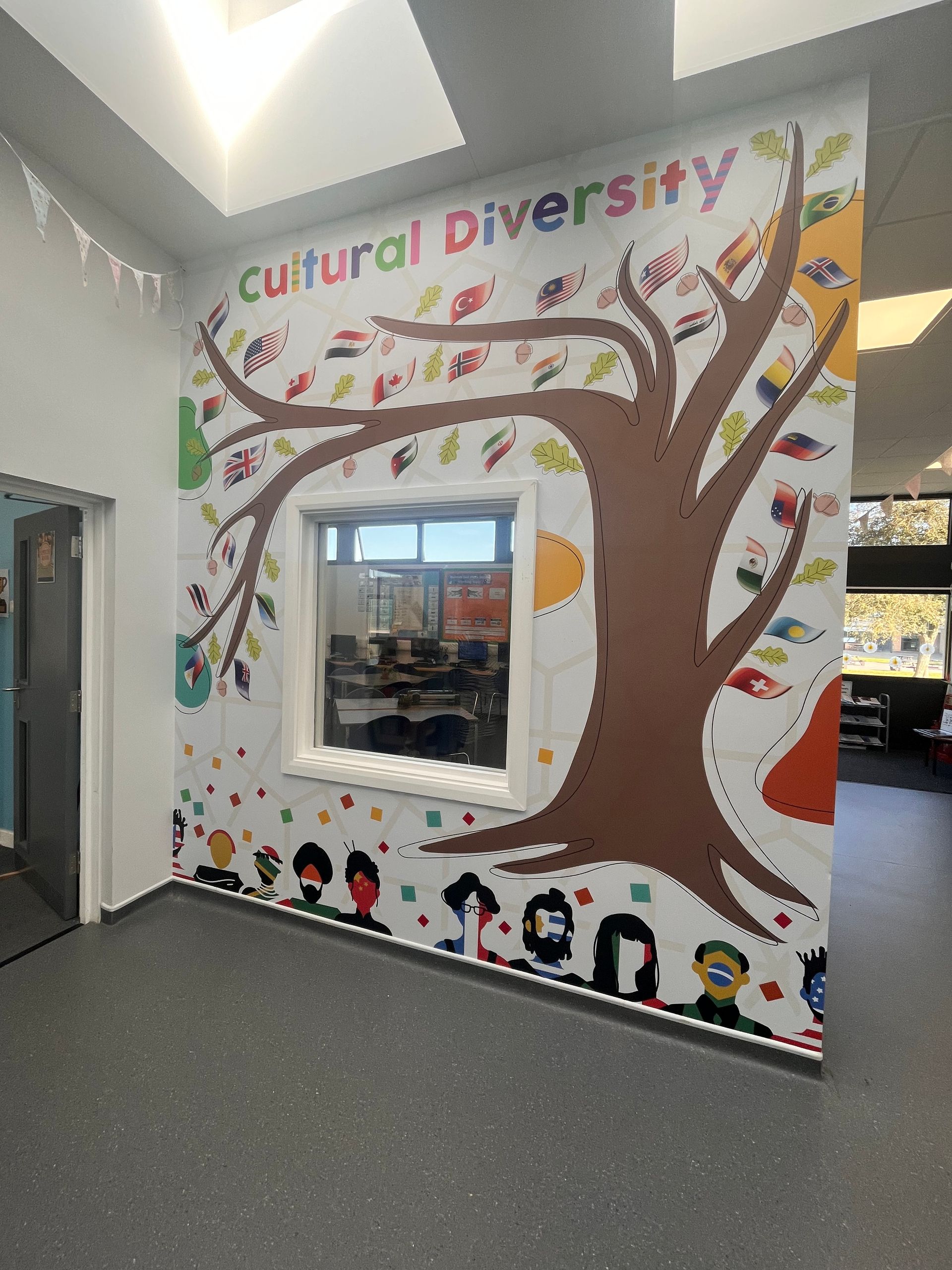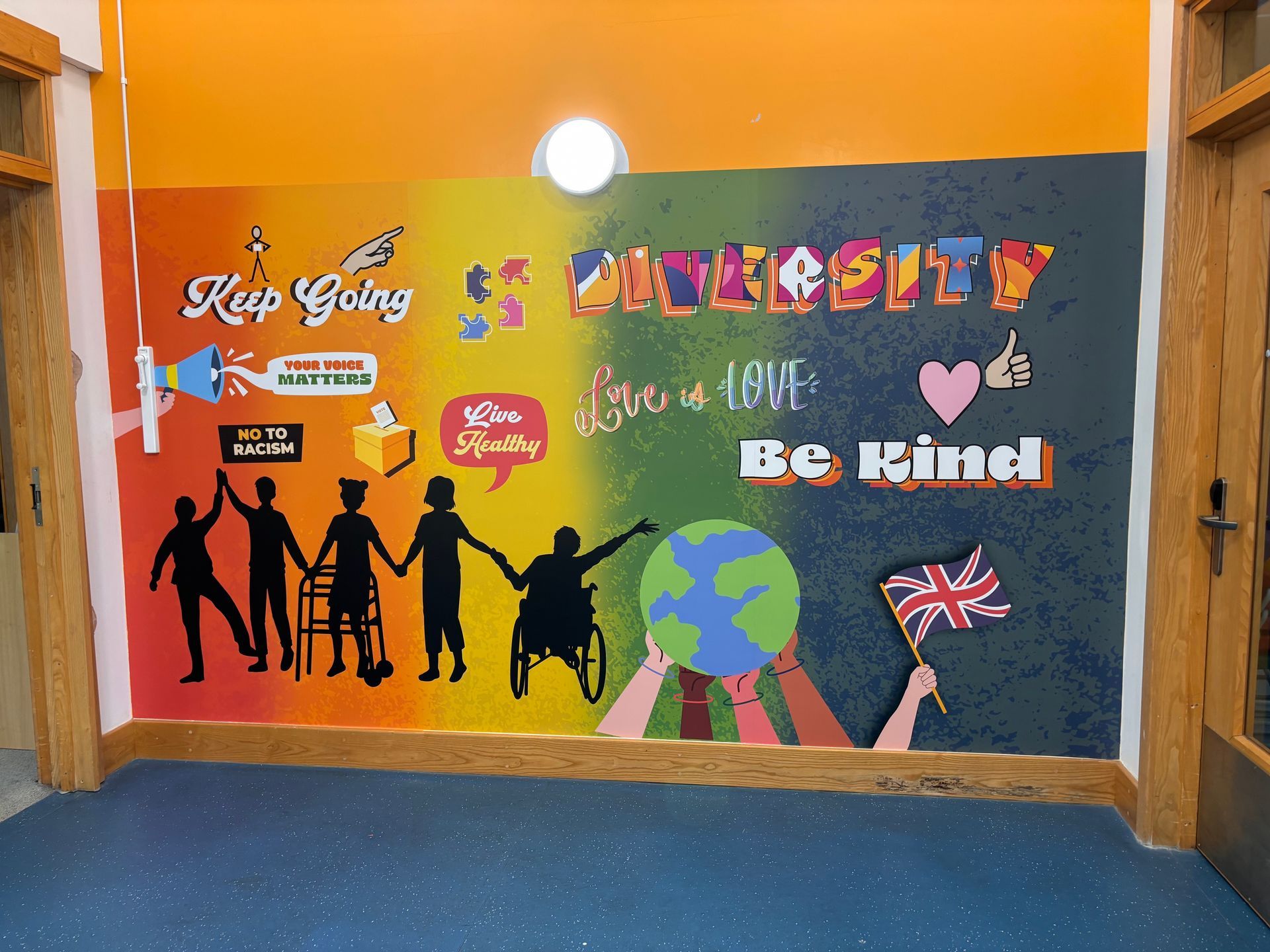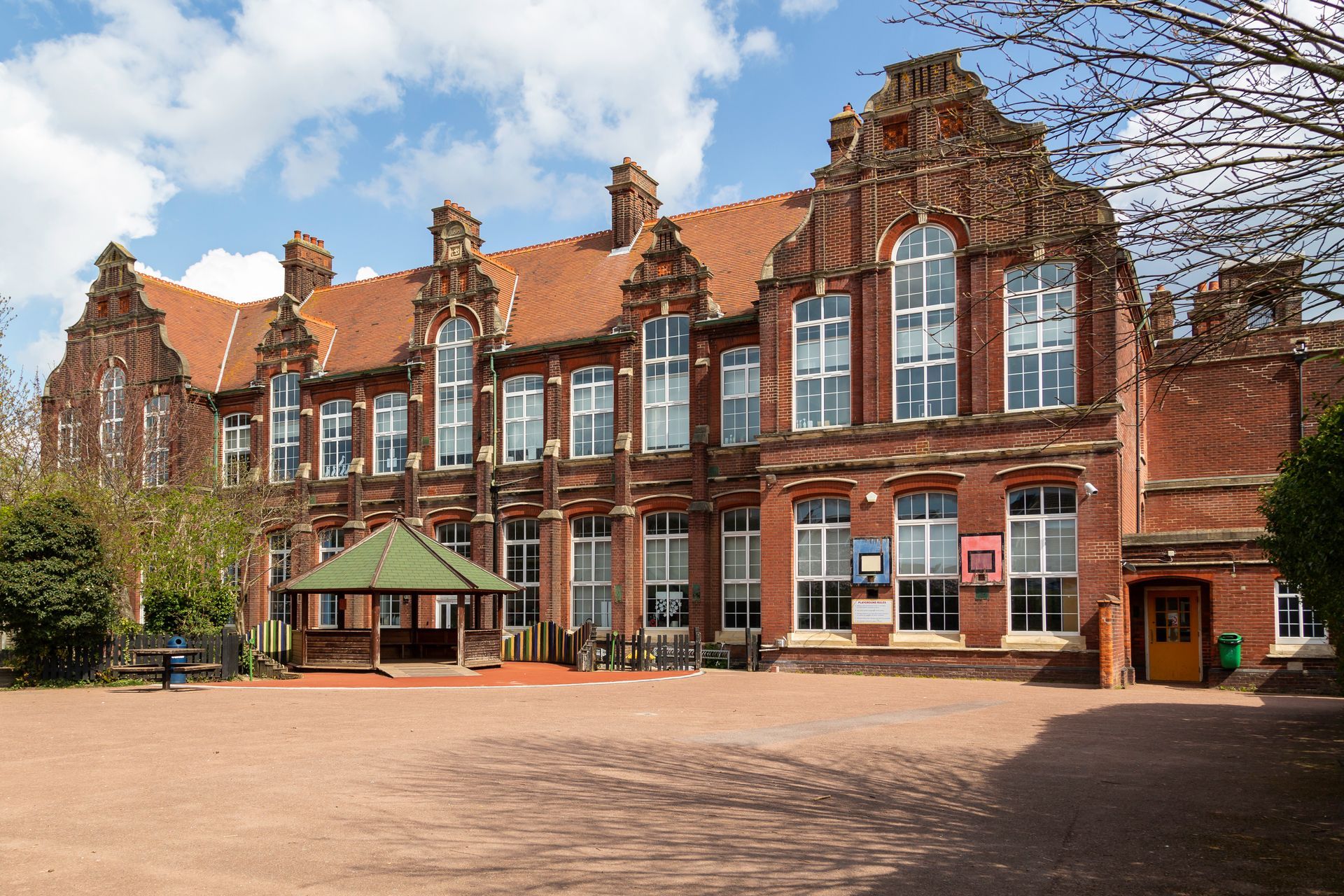Impact on pupils 19
Wall graphics showcase stories and celebrations from different cultures, allowing children to explore narratives and traditions from around the globe and fostering a sense of multicultural awareness and understanding among young learners.

Using Wall Graphics to Enhance Cultural Education
Designing wall graphics that showcase tales, festivals, and customs from around the globe can significantly promote multicultural awareness and offer children insights into various viewpoints.
Here's a guide on crafting and incorporating wall visuals to bolster learning ;
Essential Components for Teaching Cultural Studies
Cultural Myths;
- Explore the enchanting world of stories by depicting known myths and legends from various cultures, like Greek mythology, African folklore and Native American tales.
- Illustrate these stories using a series of panels to make them visually engaging and easy to follow.
Customs;
- Explore a range of celebrations and traditional observances such as Diwalis in India and the Festival of Lights or the Chinese New Year festivities to mark the start of a lunar year filled with joy and traditions shared by families and communities worldwide.
- During these celebrations, customs, such as practices in dances and music and the attire linked to these festivities, are often displayed.
Cultural Famous sites;
- Essential Symbols to incorporate are icons such as the Eiffel Tower in France, the Great Wall of China, the Statue of Liberty in New York City, and the Pyramids of Egypt.
- Utilise maps to display the locations of cultures and showcase national flags and significant landmarks.
"An array of characters, from backgrounds and their daily experiences;"
- Utilise characters from backgrounds participating in routine tasks to showcase similarities and distinctions among them.
- Incorporate representations by including a range of skin tones, attire styles, and physical characteristics to depict a community accurately.

Strategic Positioning for Optimal Effectiveness
- Classrooms are where students gather for learning and education purposes.
- Dedicate classroom sections to cultures and rotate displays according to the current curriculum or international celebrations.
- Utilise story panels along the walls to educate about myths and legends by incorporating these tales into the journey.
Hallways and corridors connect areas and facilitate movement between rooms and spaces in buildings.
- Create hallways by incorporating cultural themes that showcase maps of different regions as narratives and festive traditions unique to each culture.
- Add maps for students to explore, allowing them to delve into countries and their unique cultures.
- Create celebration walls by putting up displays in shared spaces showcasing a variety of festivals for students to explore and discover different traditions in their leisure time.
- Establish Global Citizen Panels to provide a platform for students to exchange insights into their heritage and share stories about their traditions and family history.
Cosy reading corners;
- In reading spaces, use murals that illustrate scenes from known tales to inspire children to delve into books related to these narratives.
- Feature characters from backgrounds in mural paintings to enhance multicultural awareness through visual narratives.
Approach for Putting Plans into Action
The process of designing ;
- Incorporate the insights of experts and community stakeholders—including parents and leaders—to guarantee the accuracy and cultural sensitivity of the visuals used.
- Encourage students to contribute their narratives and customs during the design process to boost student engagement.
Selecting the materials for the task.
- Select child-safe materials to ensure a non-toxic environment for children to engage with.
- Choose eco alternatives by selecting materials to encourage environmental stewardship.
- Ensure the installation is done by a professional for safety, to maintain an appearance, and to prevent alignment or damage problems.
- Make sure to place graphics at a height kids can easily see and reach.
- Maintaining maintenance and regular updates is essential to keep everything running smoothly and efficiently.
- Remember to maintain your graphics by scheduling cleaning and maintenance to ensure they stay fresh and engaging.
- Let's schedule updates to incorporate cultural narratives and festivities, maintaining an engaging and ever-evolving atmosphere.
Cultural education wall graphics are a way to showcase aspects of culture and heritage.
Multicultural Narrative Boards;
- Presented as a series of connected illustrations are known myths and legends from various cultures, such as the cunning Anansi from African folklore, the courageous Mulan from Chinese tradition, and the epic saga of Perseus from Greek mythology.
- Students are drawn in by narratives that educate them on cultural traditions and legacies.
The festive and holiday display wall;
- A lively mural showcasing a variety of festivals and holidays with depictions of customs, dress and cuisine linked to each event.
- Influencing by encouraging comprehension and admiration for cultural customs helps create a feeling of global unity.
- This is a detailed global map featuring components that students can explore by touching to discover information about the culture of each country, including critical monuments, significant foods, and renowned figures.
- This fosters a sense of adventure and wonder about the world while expanding one's understanding of geography and cultures.
- Graphics depict children from diverse backgrounds engaged in pursuits such as attending school, playing, and participating in family customs.
- They are emphasising the distinctiveness. Shared aspects of cultures foster compassion and mutual comprehension among people.
Closing Ideas
Incorporating narratives and traditions into school wall art can greatly enrich education and foster multicultural awareness among students. These artistic displays enhance the learning environment's appeal and offer valuable educational advantages by introducing children to various viewpoints and nurturing a global mindset. This method of incorporating elements into school spaces through art installations can cultivate a compassionate school community that equips students with the skills needed to succeed in a diverse global society.










